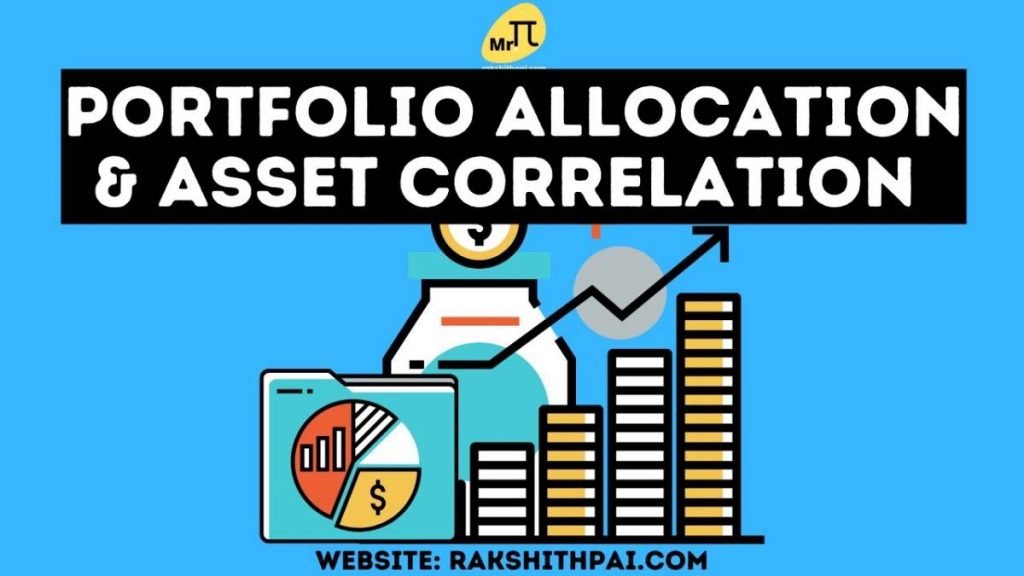Table of Contents
Introduction:
Investing in Equity is extremely important for one to not only safeguard your wealth against the ill effects of inflation but also to grow wealth over time.
But, before investing in Equities, one must define and decide what kind of investor he/she is. Here, we are trying to understand our risk and return perspective and our current financial situation. Now, what’s a better way to understand ourselves than by way of diversifying? For more information about “How to Diversify your Stock Portfolio?” CLICK HERE!
It is crucial to diversify your portfolio and to determine the proportion of equity, debt, gold, and international fund you hold in your portfolio. This way, you’ll decide your risk and return probability by allocating your investments to various assets.
Generally, if you are a young investor, say aged between 20 – 40 with little debt, your equity component should be greater, say 70-80%. As you age, your equity holdings should eventually decrease and your debt such as bond holdings should increase. Around 5-10% should be invested in gold and overseas funds, respectively.
- Those in your 20’s check this article. CLICK HERE!
- Those in your 30’s check this article. CLICK HERE!
Experts believe that this isn’t the best time to aggressively invest in Indian Equities. The reason being they are overvalued. So, in this article, you’ll understand the current market condition better.
So, it is suggested to have other asset classes in investment to heed against Equity losses if the Stock Market goes bearish hereon.
To know in brief about all the asset classes available for Indian Investors, check this article – “Best Investment Plans in India for Middle Class 2021”
How can one say that the market is overvalued?
We see whether the market is valued right based on the index P/E trailing rate. Thus, when we say the market is hovering above 40 or 50 P/E, we mean that the companies in the Indian stock market are trading at such rates with lower earnings hence giving over 40 – 50 P/E. Which isn’t a good sight.
But, Price to Earnings is just a present forecast that clearly omits the future growth aspects. And, when our economic estimates indicate that now is a favorable time for real economic growth. And, it is predicted to make a big comeback in 2022 and 2023, restoring calmness to the equity market and preserving its premium pricing.
This means, there is growth! With the growth in the company’s sales and earnings, the growth aspect will factor into the high-priced stocks. Meaning, if a company is valued at a high P/E of 50 and is giving good quarterly figures. Then, in the coming days, due to an increase in its earnings, the P/E figures will drop down. So, concentrate on earnings and growth.
Does this logic apply to all classes of the market?
We have segregated the market into 3 different classes.
Large Cap or Blue chip companies:
These companies are valued at over 1 lakh crore in market cap. These are Growth-oriented companies. They truly define where the market goes. Up or down, the blame is on them.
Mid-Cap companies:
These companies are valued between 10,000 crores to 1 lakh crore in market cap. They have the capability to become the next Nifty 50 or Sensex 30 company. The term “Future multi-bagger” companies are usually taken from here.
Small-Cap companies:
These companies are valued at less than 10,000 crores in market cap. Here, we have small companies that try to become the next mid-cap and then the large-cap too. You can also make a sub-category for small caps known as “Microcaps”. They are those under a 1000 crore market cap.
Update October 2021:
Now, the current situation where the market is overvalued comes especially from those under Midcap and small-cap companies.
It’s not new to say that small and mid-cap companies have rallied very well during the post covid bull run. But, it’s this rally that is creating an issue now. In comparison to Nifty’s 13% increase in 2021, the Nifty Midcap 50 index has gained 27%. The Nifty smallcap 50 indexes, on the other hand, have increased 35% thus far. The surge is broad-based, as both midcaps and smallcap stocks are up. Indeed, midcap and small-cap stocks have beaten the Nifty by a wide margin.
The market is in the overvalued zone if you consider Mr. Warren Buffett’s “Market cap to GDP ratio” as a base of analysis. The said ratio is hovering way over 100 for a long time and this has been a sign of concern for Value investors.
Unlike any large-cap companies that are known to grow over and above the country’s real GDP rate. The small and mid-caps usually lag behind, be it due to peer competition, economic factors, financial issues, or others. And, when these companies are valued highly, and when they are not able to live up to their expectation in terms of earnings, sooner or later, the market will notice their high valuation and correct them!
Now, it’s not that these corrections come only in small and mid-cap spaces. But, as said earlier, if the market in its entirety corrects and the index is down then it affects the large-cap companies more than those of small and mid-caps.
But, if we are seeing a bubble-kind scenario in the small and mid-cap space. Like the current situation. Then, it is suggested to take a step back. Look at our portfolio and see what companies are valued high and will the valuation sustain.
As I said, a high valuation in a large-cap company with high growth potential is not the same as a high valuation in any small and mid-cap company with high growth potential. Because the issues and difficulties faced by large-cap companies are those that the company may be able to handle but this isn’t the case under those small and mid-cap companies.
And, when we see that the entire rally has been predominantly at small and mid-cap space. It is the right time to re-check and reevaluate your holdings.
Update February 2023:
When compared, the long-term returns of mid-caps have been superior to those of large-caps, and those of small-cap companies (those that consistently perform better than their peers) tend to give astronomical returns far exceeding those of mid- and large-cap companies. Even after accounting for the inherent volatility in these returns, this relative outperformance persists. This highlights the importance of a young investor’s portfolio having good exposure to mid- and small-cap stocks.
There is a cyclical trend in the relative performance of mid-caps compared to large-caps. Cyclical swings around the trend line have varying durations and magnitudes, making it hard to match an exact pattern.
Having said that, we must also consider the current economic situation. With the global economies either emerging from or still in a state of recession and interest rates at their highest in over two years, it is not advised to invest in small and midcap companies. especially if one wishes to go overboard on them.
Investors can instead invest in well-performing mid- and small-cap equities in a staggered manner over a span of 2 to 4 quarters. Let the companies in these segments recover from the credit shock and market acceptability. Let the companies show growth in line with its pre covid figures (adjusted with growth). Until then, do not go overweight on risky investments.
Conclusion:
Before the conclusion. I give 2 pieces of advice:
- Listen to Mr. John Bogle, the Founder of “Vanguard”. He says, “Never, ever, ever get out of the market!”. It is proven that those who stay in the ups and downs of the Stock Market make much more wealth than those who try to “Time the Market”.
- Overvaluation in Mid and small-cap space is real! Check your portfolio and if need be, consider trimming it down. Ask your financial advisor for more information.
So, what to do? Should we stay invested or book profit from time to time or be aggressive and invest further more into the market or be feared of the raging bull and book out the entire portfolio?
Well, there’s no straight answer. It all depends on you and your current Financial & emotional intelligence. But, all I can say is that no matter what your decision in this regard is, see to it that the above 2 points are considered.
For more information, check our YouTube video:
Disclaimer: All the information on this website is published in good faith and for general information purposes only.
Also read:









